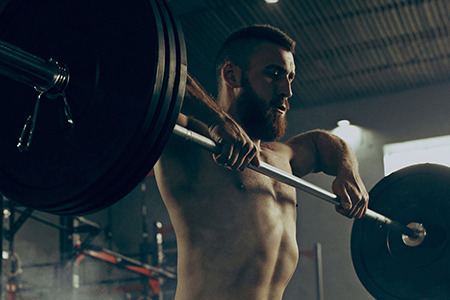Bulking is not as simple as it may at first seem. The whole idea behind it is to create a prolonged state where the body has a surplus of calories, and within this time, training is specifically centred around muscle growth; it’s essentially the opposite of a weight loss diet. But, within this concept, there are actually two ways to go about it. These are known as ‘clean bulking’ and ‘dirty bulking’. Both are intended to produce the same results, but are distinctly different from each other. Here are some of the main differences.
The first is the time span in which these bulks take place. Clean bulking is a much more gradual, balanced approach to muscle growth, where extra calories are consumed, but more carefully. Dirty bulking should last around 4-6 months, as it’s all about creating as much mass as possible, but also because the diet is going to be quite an unhealthy one in all other aspects, so the body should not engage in it for too long. Clean bulking can go on for anything from four months to a full year; it’s a lot healthier, but takes patience.
Another difference is the amount of excess calories needed. Clean bulking is an incremental step; if your recommended daily intake is 2000 calories a day, nutritionists recommend going for a 15% or so increase, to around 2300-2500 a day. This equates to about one or two pounds of extra weight a week. Dirty bulking goes all out, however, and those who take part in it gradually increase their caloric intake much quicker, until they are consuming around 3000-5000 calories per day. Of course, a dirty bulker is going to be working harder to clear this and turn it into muscle, but it’s a massive jump and shouldn’t be taken lightly.
The other major difference is what is allowed. Clean bulking is dependent on a lot of lean proteins; chicken and fish, turkey, beef, pork, Greek yogurt, cottage cheese and other low fat/reduced fat cheeses, tofu, and eggs and egg whites, along with healthy fats like avocado, nuts, flax seed and fish such as sardines and pilchards. Dirty bulking allows pretty much anything; processed foods, donuts, milkshakes, steak, burgers…its all fair game if you think you can convert it to muscle.
The side effects are also vastly different. Clean bulking runs at a healthy surplus; gradual increases in caloric intake mean that the level of bulk carried is manageable and will be worked off over a period of months to a year. Dirty bulking can be worked off into muscle, but the bar is set incredibly high, and it carries with it an increased risk of becoming overweight as well as internally unhealthy; excess sugar, fat and protein can wreak havoc on the renal system as well as increase the risk of heart trouble, strokes and diabetes. That said, if you know what you are doing and are indeed able to work out to the point that it’s all getting metabolised quickly, these risks are reduced.
Ultimately, the main difference lies in whether you want slow or sudden muscle growth. For the former, clean bulking presents a safer way to produce excess bulk that can be more easily managed and worked off at a comfortable pace. Dirty bulking is a riskier, more inherently unhealthy approach, but for sudden bulking, and with the right exercise, the results are going to be far more noticeable. Do not suddenly jump into either without doing some meaningful research. You may find, for example, that your weight gain journey does not require either, or that you may indeed need to look at losing weight. Speak to a personal trainer or health consultant to see if either are suitable.


